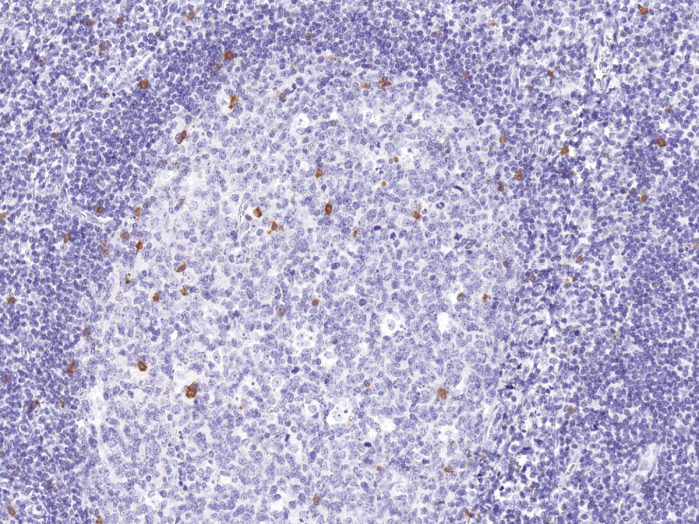Anti-CD57/B3GAT1/HNK1 (Hu) from Mouse (IHC539) – unconj.

-
Overview
SKU AB-138204 Specificity Species Reactivity Immunogen Host Species Isotype Clone Clonality (Mono-/Polyclonal) Application ELISA, Immunohistochemistry (IHC), Immunohistochemistry (Paraffin-embedded Sections)
Conjugation Dilution Format < 0.1% NaN3, 1% BSA, concentrate, in Tris buffer (pH 7.3-7.7), ProteinA/G purified antibody
Intended Use Temperature - Storage Temperature - Transport Manufacturer / Brand Uniprot_ID Gene_ID Alias B3GAT1, beta-1,3-glucuronyltransferase 1 (glucuronosyltransferase P), CD57, galactosylgalactosylxylosylprotein 3-beta-glucuronosyltransferase 1, GLCATP, glcUAT-P, GLCUATP, glucuronosyltransferase P, HNK1, LEU7, LEU7 antigen, NK-1, NK1, OTTHUMP00000235432, UDP-GlcUA glycoprotein beta-1,3-glucuronyltransferase
- Datasheets and Downloads
-
Additional Product Information
Cluster of Differentiation 57 (CD57), also known as NK-1, is an antigen detectable in natural killer cells, some T-lymphocytes and normal peripheral blood mononuclear cells, myeloid cells, and a variety of polypeptides, lipids, and chondroitin sulfate proteoglycans. CD57 is indicated as a marker for tumours of neuroendocrine origin, including pheochromocytomas, paragangliomas, medulloblastomas, and carcinoid tumour, as well as various neural tumours including neuromas, neurofibromas, schwannomas, and granular cell tumours. CD57 is also detectable in ganglioneuroma and prostate carcinoma. Anti-CD57 is used to distinguish nodular lymphocyte-predominant Hodgkin‘s lymphoma from T-cell/histiocyte-rich large B-cell lymphoma, nodular sclerosis Hodgkin‘s disease, and follicular lymphoma.
-
Images

Immunohistochemical staining of formalin-fixed and paraffin-embedded (FFPE) human tonsil tissue section using anti-CD57 mouse monoclonal antibody (Clone IHC539).
Contact
